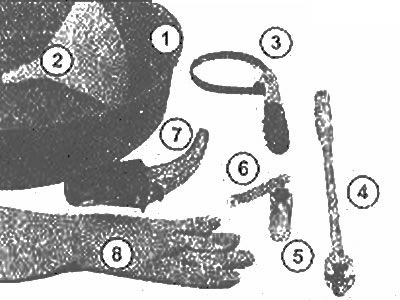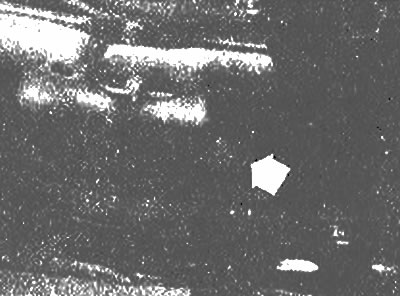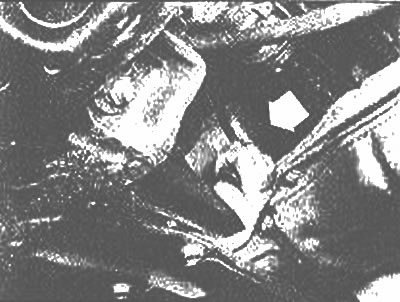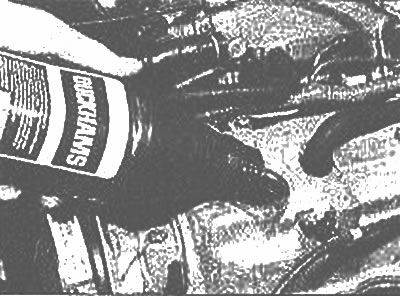2. Although some sources recommend changing the oil filter every second oil change, the low cost of the oil filter and the relative ease of replacing it make it possible to install a new filter at every oil change.
3. The tools needed to change the oil and filter is a wrench to install the drain plug in the bottom of the sump; a special wrench to remove the old filter; a container with a capacity of at least 7 liters to drain the old oil and a funnel to fill in the new oil (photo).

Tools needed to replace the filter:
- 1.Drain container
- 2. Funnel
- 3. Special key for filter removal
- 4. Key to working on hard to reach places
- 5. Nest
- 6. Knife for opening oil cans
- 7. Landing for draining / filling oil
- 8. Rubber gloves
4. Also, have a clean rag and old newspaper ready to wipe up spilled drops. Access to the bottom of the vehicle will be greatly improved if the vehicle is hoisted or placed on axle stands.
Warning: Do not work under a vehicle supported only by a jack.
5. If you are changing the oil for the first time, get under the car and locate the oil drain plug and oil filter. If a skid plate is installed, it may need to be removed.
6. Warm up the engine to normal operating temperature. Use the warm-up time to gather everything you need for the job, see models for oil type "Recommended lubricants and fluids" at the beginning of this guide.
7. Warm up the engine (warm engine oil will drain more easily and faster, and more sediment will come out with it), jack up the vehicle and place it securely on axle stands.
8. Put all necessary tools, rags and newspapers under the car. Place a container under the drain plug. Keep in mind that the oil will initially flow out of the sump with some pressure.
9. Without touching the hot components of the exhaust system, remove the drain plug with a wrench (photo). You may need to wear gloves when unscrewing the final few turns.

Drain plug location (arrow)
10. Let the old oil drain into a container. It may be necessary to move the container under the engine when the jet pressure decreases.
11. After all the oil has drained, wipe the drain plug with a clean rag. Small metal particles could stick to the cork, which would contaminate the new oil.
12. Clean the area around the drain and install the plug. Tighten the plug securely with a wrench.
13. Move the drain container under the oil filter.
14. Use a special wrench to loosen the oil filter. Chain or metal band wrenches may deform the filter canister, but this should not be a concern as the filter will be replaced (photo). Where the oil cooler is installed, hold it stationary when unscrewing the filter.

Strip wrench for removing the oil filter is convenient to use in hard-to-reach places
15. Sometimes the oil filter is clamped so tightly that it cannot be unscrewed, or it is installed in a hard to reach place. In this case, you can drive a metal rod or a long screwdriver directly into the wall of the filter canister and use it as a lever to unscrew the filter. Get ready to slosh oil out of the canister when piercing it.
16 Unscrew the old filter completely. Be careful, it's filled with oil. Drain the oil from the filter into a drain container.
17. Compare the old filter with the new one to make sure they are identical.
18. Use a clean rag to remove all oil, dirt and sediment from the oil filter mount to the engine. Inspect the old filter to make sure its rubber gasket has not been left on the engine. If the gasket is stuck to the engine, remove it using a flashlight if necessary.
19. Apply a thin layer of oil around the entire periphery of the rubber gasket of the new oil filter.
20. Install a new filter to the engine following the instructions printed on the filter canister or packing box. Most filter manufacturers do not recommend the use of a filter wrench, as the filter is easy to pull (damage the seal). If there are no installation instructions, hand-tighten the filter three-quarters of a turn from the point where the rubber gasket makes contact with the motor surface.
21. Remove all tools, rags, etc. from under the car. Be careful not to spill oil from the drain container, then lower the vehicle to the ground.
22. Locate the oil filler plug on the camshaft cover in the engine compartment (photo).

Oil is poured through the hole in the camshaft cover
23. If an oil filler nozzle is used, insert it into the neck of the oil canister and pour in fresh oil through the filler hole. A funnel may also be used.
24. Pour 3.5 liters into the engine. fresh oil. Wait a few minutes to allow the oil to drain into the sump, then check the oil level with the dipstick (see chapter 4, if it is needed). If the oil level approaches the skein "F", start the engine so that the new oil can circulate.
25. Let the engine run for about a minute, then turn it off. Immediately check the sump drain plug and the area around the oil filter for leaks. If there are leaks, slightly tighten the plug or filter. On models with an oil cooler, also check the area between the oil cooler and filter for leaks. If leaks are found, remove the oil cooler (Section 2) and replace the seal.
26. Recheck the oil level with the dipstick and add enough oil to bring the level up to the mark "F" on the probe.
27. During the first few days after an oil change, check the drain plug and filter frequently for leaks and keep an eye on the oil level.
28. Old oil drained from the engine cannot be reused.
